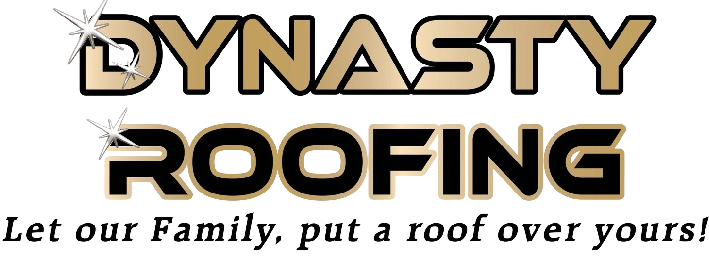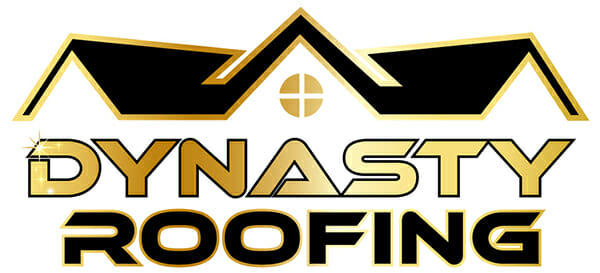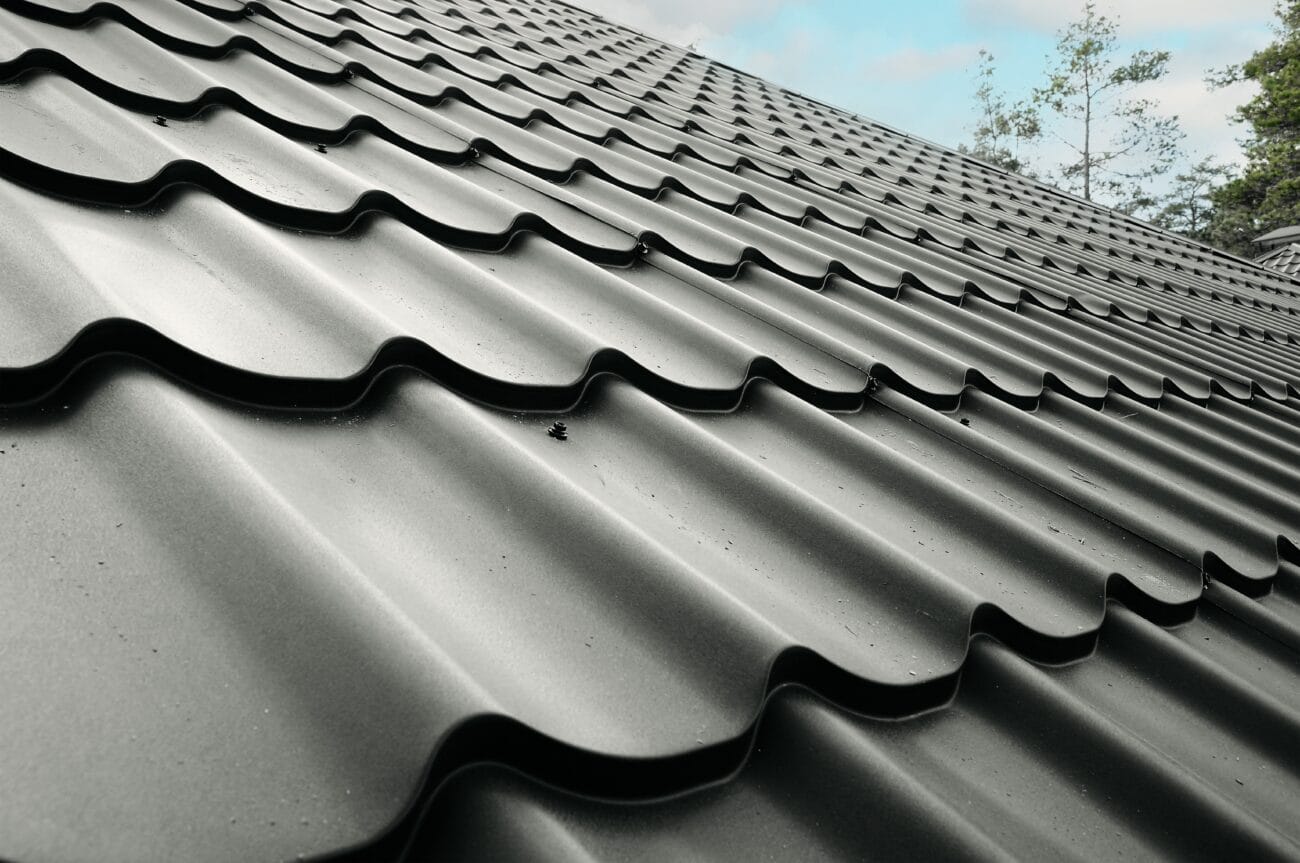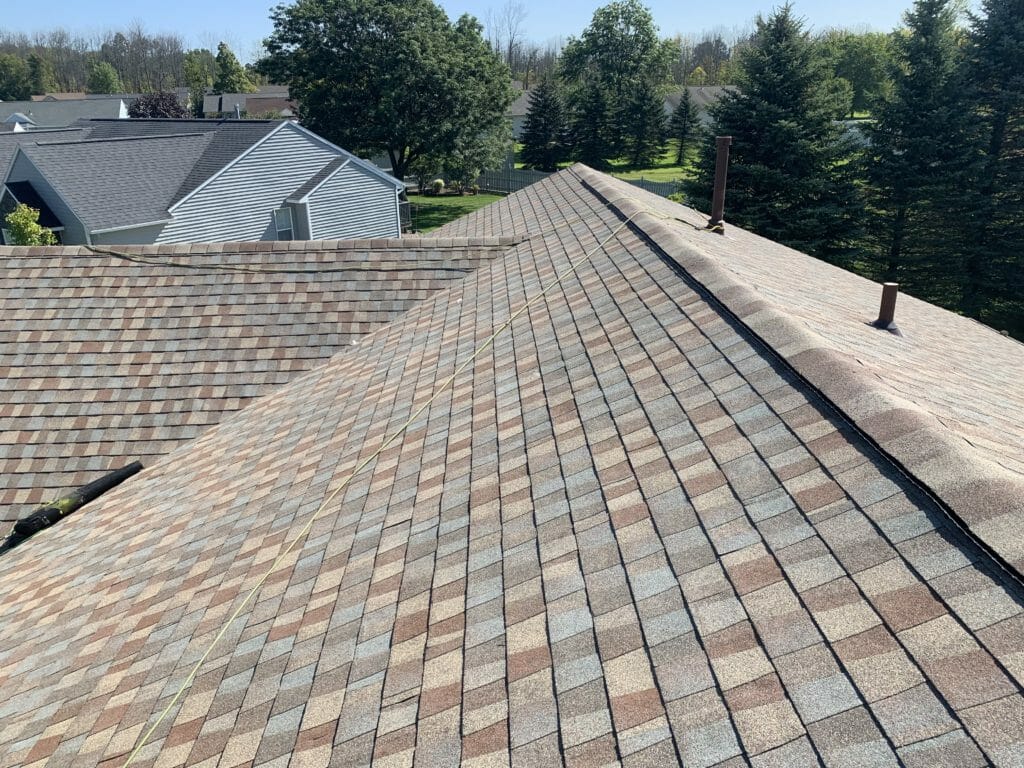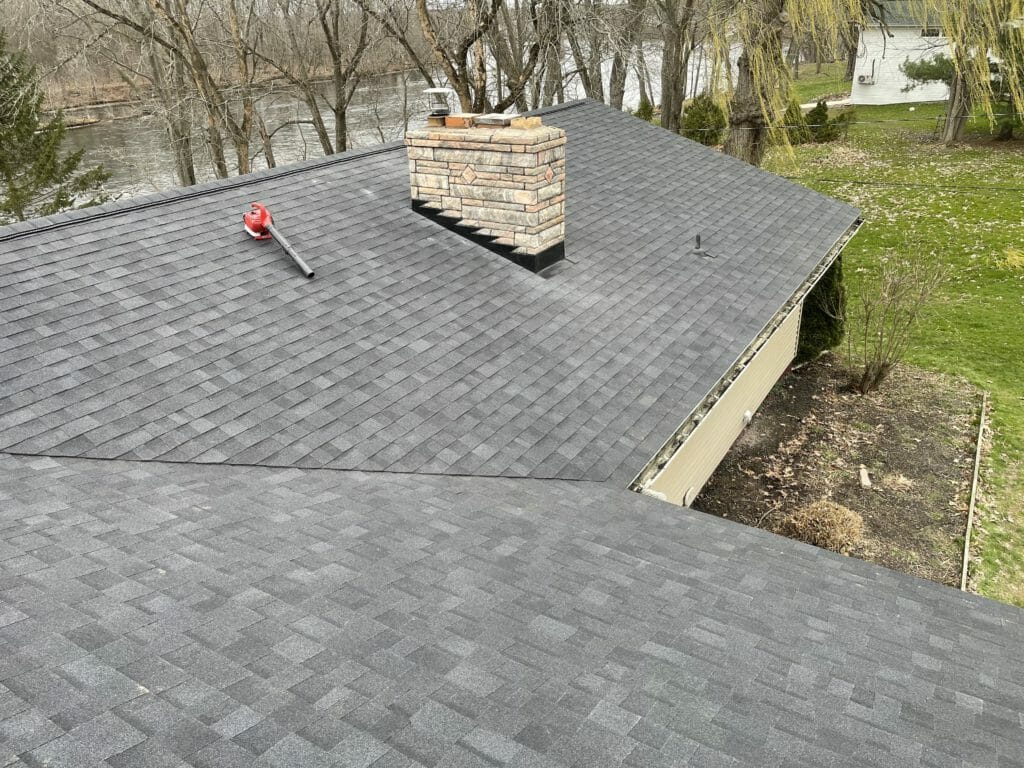If you’re a homeowner in Liverpool, NY, or a surrounding area and dealing with roof repair issues or considering a full replacement, corrugated metal roofing is a smart solution worth exploring. As a trusted local roofing contractor, we understand the challenges that Central New York’s weather can pose, and we know what it takes to protect your home in the long term.
In this article, we’ll explain why corrugated metal roofing is a smart investment for your home, highlight its performance benefits, and walk you through the panel options available for your next roof upgrade or repair.
What Is Corrugated Metal Roofing?
Corrugated metal roofing begins as a flat sheet of metal, often steel or aluminum. It’s then roll-formed to create a pattern of repeating waves or ridges. These resulting corrugated panels are fastened to the roof structure, typically with an exposed fastener system.
The familiar shape you likely imagine is the round, wavy S-curve. This simple design makes the corrugated panel lightweight but incredibly strong. The folding process gives the sheet metal a high strength-to-weight ratio, a key benefit over traditional roofing materials.
This strength means that even a lighter gauge of galvanized steel or aluminum roofing can become a durable roof panel. It can handle years of the harshest weather, from heavy snow to high winds, and it’s a smart upgrade from traditional roofing materials like asphalt shingles or clay tile.
How Are Metal Panels Made?
The creation of metal roofing panels is a refined manufacturing process. It starts with large coils of steel or other metals. These coils are coated with a protective layer, such as zinc for galvanized steel or an aluminum-zinc alloy for Galvalume steel, to prevent rust.
After the protective coating, the metal is painted or left with a natural metallic finish. These finished coils are sent to suppliers who then feed the flat sheets through a series of rollers. These rollers press the metal into its final corrugated sheet shape.
This roll-forming method was first developed in the 1820s by an architect and engineer named Henry Robinson Palmer. He wanted to create roofing materials that were affordable and easy to install. His invention quickly became a top choice for both residential and commercial buildings.
The Main Styles of Corrugated Metal Roofing
The term corrugated technically covers any metal roofing panel with ridges. In the industry, however, it usually refers to the classic wavy panels. Other styles with square or trapezoidal ribs are often just called ribbed panels or by their specific profile name.
Understanding the different profiles helps you select the right look for your home. A wide variety of options are available to match your aesthetic preference. Let’s look at the most common roofing products you’ll find.
The Popular Wave: 7/8 Inch Corrugated
This is by far the most popular style for corrugated metal roofing sheets today. Its deep, 7/8-inch curves create very appealing shadow lines. This feature gives the roof depth and visual character.
Beyond its aesthetic appeal, it’s also the strongest of the wavy corrugated panels. For a correct installation, your roof must have a minimum slope of 3 inches for every 12 inches of run. This panel type is not suitable for a completely flat roof deck.
To keep water out, each new panel must overlap the last one by two corrugations. This means you’ll need to purchase about 10%–12% more material than the exact coverage area.
The Vintage Look: 1/2 Inch Corrugated
You may have seen this style on old barns or historic buildings. The 1/2-inch corrugated panel has a more subtle, flatter wave profile. This was the standard design for the traditional corrugated look for many years.
It’s not as common for roofing metal anymore since the 7/8-inch panel offers superior strength. However, this style is popular for interior and exterior design projects. People use these flat sheets for accent wall panels, ceilings, and even fence panels.
Like its deeper counterpart, it requires an overlap during installation. This profile needs even more overlap to ensure a watertight seal. You would need to account for about 23% extra material for a roofing job.
Boxy Looks: Ribbed Panels
This category includes panels that have square or trapezoidal ribs instead of waves. PBR panels, or R panels, are very common, especially for commercial buildings, barns, and sheds. They offer fantastic strength and water-shedding capabilities.
These are still considered corrugated roofing because the metal is folded for strength. They just offer a different, more industrial aesthetic than the wavy styles. Some homeowners prefer this modern look for their metal roofs.
While most corrugated and ribbed panels use an exposed fastener system, another option is the standing seam roof. A seam roof uses concealed clips and fasteners for a sleeker look and superior weather resistance. It’s often considered a premium metal roofing product.
| Panel Style | Primary Use | Aesthetic | Overlap Needed |
|---|---|---|---|
| 7/8 Inch Corrugated | Residential and Commercial Roofing, Siding | Classic, Wavy, Deep Shadows | 10%–12% |
| 1/2 Inch Corrugated | Accents, Interior Walls, Wainscoting | Vintage, Subtle Wave | ~23% |
| Ribbed Panel (PBR/R Panel) | Commercial Buildings, Barns, Sheds | Modern, Industrial, Angular | 5%–7% |
| Standing Seam Panel | High-End Residential and Commercial | Sleek, Modern, Clean Lines | Minimal |
A Great Choice for Upstate New York Homes
Dealing with tough weather is a part of life in many regions. A steel metal roofing system is built to handle it all. It can withstand heavy snow loads without buckling under the weight.
Ice dams are less of a problem on a smooth metal surface, and high winds are less likely to lift a metal roofing panel compared to shingles. A metal roof can also have excellent resistance to hail and fire. These benefits provide valuable peace of mind.
Many metal roofing systems also offer great energy efficiency by reflecting solar heat. This can help keep your home cooler in the summer and potentially lower your energy bills. With many options available in different color charts, you can pick a finish that maximizes this benefit.
When you choose a material such as galvanized steel or stainless steel, you’re making a long-term investment. A quality metal roof can last 50 years or more, often backed by a long warranty. That is two or three times the lifespan of a standard asphalt shingle roof.
Our Conclusion
Choosing a new roof is a significant decision for any homeowner. You want something that protects your home and adds value. A corrugated metal roofing system provides an impressive combination of durability, style, and long-term performance.
It stands up to heavy snow and high winds, making it an excellent choice for demanding climates. With different styles to choose from, including ribbed panels or a standing seam roof, you can find the perfect look. These versatile metal siding panels can also be used for other projects around your home.
The longevity and strength of steel mean you’re investing in your home’s future. Considering a roof that could be the last one you ever need is a comforting thought. This makes metal one of the best roofing materials available today.
